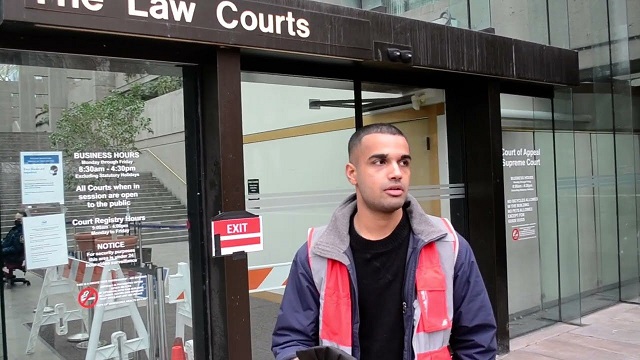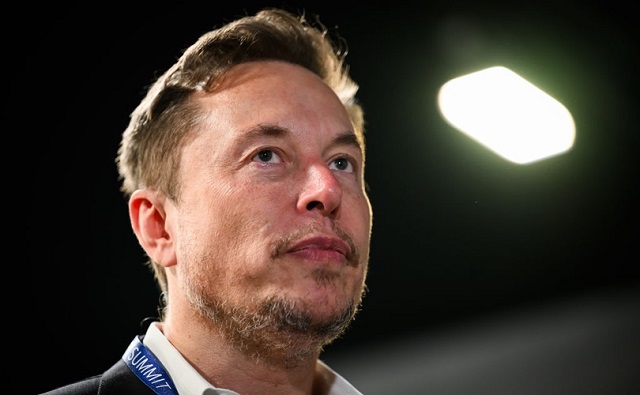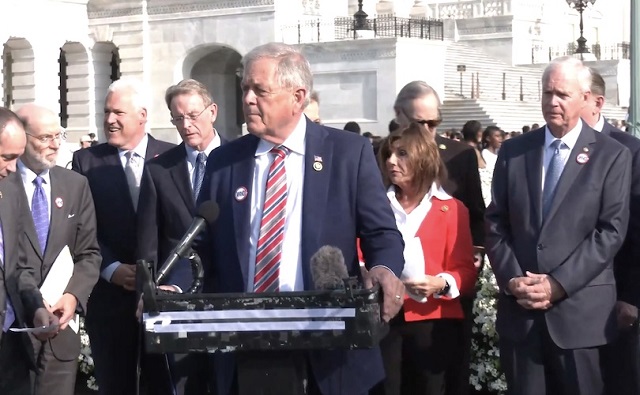Opinion
Why do we pay at the pumps, a higher Carbon Tax on long weekends?

It is becoming quite apparent that the Carbon Tax is only applied on weekends, especially long weekends. Why do I say that?
“The price of gas goes up 5 cents because of the carbon tax” has been said, stated, yelled, printed, and pointed out by so many people it must be true.
So why is the price of gas $1.03 on Tuesday, $1.14 on Friday, $1.09 on Monday, $1.18 on Friday, $1.11 on Tuesday then $1.22 the next Friday, before a long weekend?
The next question is: “Is the Carbon Tax higher in Red Deer than in Innisfail 28 kms. away?” Why is our gas more expensive than other neighbouring communities?
So if the “CARBON TAX” is the blame, why the discrepancies?
Everyone agrees that we are witnessing climate instability, even the Premier of Saskatchewan, admitted it on Question Period April 28, 2019 and almost everyone acknowledges that CO2 has a role to play, so why are we stuck on 2 words “Carbon Tax”?
I remember when cigarette smoke’s health issues were denied, the acid rain debate, recycling costs, and the importance of waste management. I remember when bottled water became the norm, I remember using DDT and politicians arguing about asbestos’s health issues.
Every month I pay the city to treat my wastewater, manage my garbage and recycling. I know there is a cost to pollute and I pay it. I don’t run my car in a closed garage because of the carbon monoxide, I believe there is also Carbon Dioxide pouring out my exhaust pipe and since it appears that it is part and parcel of our current climate instability then I am prepared to pay the cost.
The question is why does the carbon tax go up on the weekends?
Bruce Dowbiggin
Come For The Graduate Studies, Stay For The Revolution

Just In: The Trudeau government intervenes at last minute to save a convicted climate agitator from deportation. The Pakistani co-founder of Save Old Growth— who first came to Canada in 2019 on a study permit— has been arrested at least 10 times and convicted of mischief. Zain Haq was due to be deported to Pakistan on Monday.
Despite a judge’s ruling denying his last hope of staying , Haq got a call from his Liberal MP’s office saying he gets to stay in B.C. after all. Good, because we’d hate for him to feel oppressed by the country in which he’s squatting. The news thrilled the nepo babies who have B.C. by the throat.
So Haq goes from unrepentant jerk to Christ crucified. Naturally. Victim politics have become the animating impulse in Western society. Attaching yourself to a forlorn cause like Haq is grounds for beatification And make no mistake, there are legions in identical little tents on campus quads who are cheering a non-Canadian defying The Man.
To generations brought up on the travails of feminist oppression, climate degradation, indigenous grievance and gender dysphoria there is nothing so sacred as a victim is all his purity, crushed by the Great White Satan of western culture. Haq is just the latest in a police lineup of wobbly performance artists taking a rhapsodic bow before the Liberal/ NDP/Green clique. While thumbing his nose at Canadians.
That’s why the current fetish for Palestinian outrage has such legs as it spreads across campuses and governmental buildings in the West. Anyone (but a white, straight male) can apply for the designation of victim. Join the party! And what a model it is! While many have tried to emulate them, none have managed the nihilist hat trick of violence, obstinacy and craven guilt quite like the Palestinians who’ve been pushing this agenda since the 1972 Munich Olympics.

Having eschewed frontal military attacks on Israel and western targets as ineffective, the PLO and its successors discovered that the more grisly the attack, the more black their message — in Munich they massacred 11 Israeli athletes— there was a segment of leftist Western culture that couldn’t get enough of their heinous tactics. (Stephen Spielberg’s 2005 film Munich pitied his fellow Jews killed in Munich but concluded that all this revenge stuff was a dead end.)
Huh. Their Arab neighbours want nothing to do with Arafat’s Children. Egypt has a wall preventing Gazans from entering their county, Jordan has expelled them for counter-insurgency, Saudi Arabia ignores them. Only Qatar offers refuge. And then only to the billionaire kleptocrats who run Hamas from penthouses in Doha.
The Oct. 7 massacre is just the latest in this dance of death with western liberals. People of a certain age will recall the Marxist-besotted Vanessa Redgrave brandishing a Kalashnikov while dancing with the PLO and its rascally leader Yasser Arafat. Her 1977 film The Palestinian was an orgy of guilt and hatred toward Israel. She’s had plenty of imitators in the media ever since. In 2021 over 100 actors— including Richard Gere, Claire Foy, Tilda Swinton, and Susan Sarandon— slammed the terrorist designation of Palestinian “rights groups”.
The same apologists are now saying that, sure, Oct. 7 went a little too far, but Palestinian repatriation means a few eggs are going to get smashed in the making of a terror state. They want a cease fire with good taste.

Were the PLO successors in Hamas and Hezbollah able to articulate some coherent vision of the future beyond slaughter then these western struggle sessions might seem justified. It’s no surprise that Arafat was the epitome of “never misses an opportunity to miss an opportunity” in negotiations. If there’s one constant in the multiple denials of treaties with Israel it is their unflinching demand that Palestinians throw every Jew they encounter into the Mediterranean on a march from “the river to the sea”.
The implacable marriage with extreme violence and racial hatred is their one and only position. Non-negotiable. None of this has any effect on the hot-house Marxists and anarchists who’ve set up shop in the universities and colleges of the West. In their protected status among the leafy tendrils of the Ivy League, a little brush with terror seems to titillate them. Occupying the quad in identical tents suppled by unnamed international groups dedicated to the overthrow of capitalism is their bougie weekend of roughing it in the bush.
Most probably wish they could experience a little of the martyrdom like the Palestinians (a gentle martyrdom naturally) or at the very least a cinematic clash wth authority such as their parents experienced at the hands of Chicago mayor Richard Daley during the 1968 Democratic convention. A tender tussle covered by their parents Medicare.
Who will stand up to these playtime antisemites? Alas, the grownups in the schools administration and in governments are cut from the same cloth. Having created safe spaces from micro aggression on their campus , they excuse the youthful exuberance of their students. (If your politics are radical, that is.) Like president Joe Biden they do the suck-and-blow of modern debate. They decry antisemitism while cautioning that we just don’t understand the depths of Palestinian oppression. Evan as students call for a new Holocaust.
Having it both ways with Hamas means a one-way invitation to more chaos. Because there is no agenda beyond the performative terror extolled by demonstrators against Israel there is no way to rationally critique Hezbollah or Hamas. At least the Nazis proposed some freakazoid homeland for their people as they heartlessly slaughtered anyone who got in their way.
So it all becomes mob mentality packaged for feckless media. The Hamas doctoral groupies don’t demand anything from Hamas beyond their faux-serious chants and designer kaffiyehs in the House of Commons. No doubt Zia Haq will be joining them again soon in the struggle. If Stephen Guilbeault can go from criminal to cabinet, Canada is wide open to him now.
Bruce Dowbiggin @dowbboy is the editor of Not The Public Broadcaster A two-time winner of the Gemini Award as Canada’s top television sports broadcaster, he’s a regular contributor to Sirius XM Canada Talks Ch. 167. New from the team of Evan & Bruce Dowbiggin now for pre-order: Deal With It: The Trades That Stunned The NHL & Changed Hockey. From Espo to Boston in 1967 to Gretz in L.A. in 1988 to Patrick Roy leaving Montreal in 1995, the stories behind the story. Launching on paperback and Kindle on #Amazon this week.
Censorship Industrial Complex
Australian politicians attack Elon Musk for refusing to remove video of Orthodox bishop’s stabbing

Photo by Leon Neal/Getty Images
From LifeSiteNews
By David James
The video is available on YouTube but Australia’s political class is singling out and waging war on X owner Elon Musk for his refusal to delete footage of the stabbing of Orthodox Bishop Mar Mari Emmanuel.
In a demonstration of governmental overreach the Australian prime minister, Anthony Albanese, has attacked Elon Musk, the owner of X (formerly Twitter) for not acceding to demands to put a worldwide ban on video footage of an attempted stabbing of a bishop in a Sydney church.
Albanese is not alone; virtually the entire Australian political class has joined in the attack. Tanya Plibersek, minister for Environment and Water called Musk an “egotistical billionaire.” Greens senator Sarah Hanson-Young described him as a “narcissistic cowboy.” Albanese chimed in by describing him as an “arrogant billionaire who thinks he’s above the law.”
Senator Jacqui Lambie went as far as suggesting that Musk be “jailed” for his refusal to bend to the demands of the Australian government.
In response to Lambie’s comments, Musk declared her to be an “enemy of the people of Australia,” agreeing with another social media user who suggested it should be Lambie, not Musk, who belongs in jail.
This Australian Senator should be in jail for censoring free speech on X. https://t.co/vnYvBjpXav
— Rothmus 🏴 (@Rothmus) April 23, 2024
The right wing Liberal-National coalition was only slightly less aggressive saying Musk was offering an “insulting and offensive argument” in his refusal to remove graphic footage of the stabbing. How Musk saying that posts should not be taken down is “insulting and offensive” was not explained.
The victim of the attack, Bishop Mar Mari Emmanuel, an Iraqi-born Assyrian Australian prelate who is head of the Eastern Christ the Good Shepherd Church, has displayed a maturity and moral virtue conspicuously lacking in the political arena. Emmanuel recorded a message saying that he loved his assailant, and that he wanted the video to stay online, urging people not to respond to violence with violence.
After the incident there were riots outside the church, resulting in 51 officers sustaining injuries. A 16-year-old boy has been arrested and charged with a religiously motivated terrorist attack.
The court battle between the Australian government and Musk is being characterised as a contest between free speech and the government’s role in protecting people. Certainly for Musk it is very much about protecting free speech.
That formulation is inaccurate. There is no effective protection of free speech in Australia, unlike the US, which has the First Amendment of the Constitution. The Federal government is currently preparing a misinformation and disinformation bill to force social media companies only to allow content of which the government approves.
As Senator Ralph Babet of the United Australia Party observes it is a “censorship agenda” that will be pushed no matter which party is in power. “The office of the eSafety commissioner was created under the Liberal Party and is now being emboldened by the Labor Party,” he writes.
The public battle with Musk is better seen as an attempt by the Australian government to control what is on the internet. The newly appointed eSafety commissioner, Julie Inman-Grant directed X to remove the posts, but X had only blocked them from access in Australia pending a legal challenge. The government then demanded that the posts be removed world-wide.
That the Australian political class thinks it has the right to issue edicts in countries where it has no legal jurisdiction is a demonstration of the lack of clarity in their thinking, and the intensity of their obsession with censoring.
Musk accurately characterised the situation in a post: “Should the eSafety Commissar (an unelected official) in Australia have authority over all countries on Earth?” It seems that many Australian politicians think the answer to that question is “Yes.”
The childish personal attacks on Musk, typical ad hominem attacks (going at the person rather than the argument) are revealing. What does the fact that Musk is a billionaire have to do with the legal status of the posts? Does having a lot of money somehow disqualify him from having a position?
If he is “egotistical” or “arrogant” what does that have to do with his logical or legal claims? How does exposing Musk as a narcissistic cowboy” have any relevance to him allowing content on the platform? Wouldn’t a narcissist be more likely to restrict content? The suspicion is that the politicians are resorting to such abuse because they have no argument.
The Australian government’s attack on Musk, which borders on the absurd, is just one of many being directed at X. An especially dangerous initiative is coming from the European Union’s Digital Services Act, which can apply fines of up to 6 per cent of the worldwide annual turnover, a ridiculously punitive amount. The United Kingdom’s communications regulator, Ofcom is even worse. It will have powers to fine companies up to 10 per cent of their global turnover.
Western governments are mounting an all out push to censor the internet, and Australia’s aggressive move is just part of that. What is never considered by governments and bureaucrats is the cost of such censorship.
The benefits of “protecting” people are always overstated and inevitably infantilize the population. The price is a degradation of social institutions and a legal system that does not apply equally to the citizenry and to the government. It is a step towards tyranny: rule by law rather than rule of law.
-

 Health1 day ago
Health1 day agoTransgender activists are threatening the author of scathing UK report on child ‘sex changes’
-

 conflict1 day ago
conflict1 day agoCol. Douglas Macgregor torches Trump over support for bill funding wars in Ukraine and Israel
-

 Frontier Centre for Public Policy1 day ago
Frontier Centre for Public Policy1 day agoThe end of Canada: The shift from democracy to totalitarian behavior in the ‘pandemic era’
-

 COVID-192 days ago
COVID-192 days agoInquiry shows Canadian gov’t agencies have spent $10 million on social media ads for COVID jabs
-

 Alberta1 day ago
Alberta1 day agoAlberta’s baby name superstar steals the show again
-

 Business10 hours ago
Business10 hours agoDon’t be fooled by high-speed rail
-

 Alberta10 hours ago
Alberta10 hours agoActivity-Based Hospital Funding in Alberta: Insights from Quebec and Australia
-

 Business8 hours ago
Business8 hours agoUN plastics plans are unscientific and unrealistic





